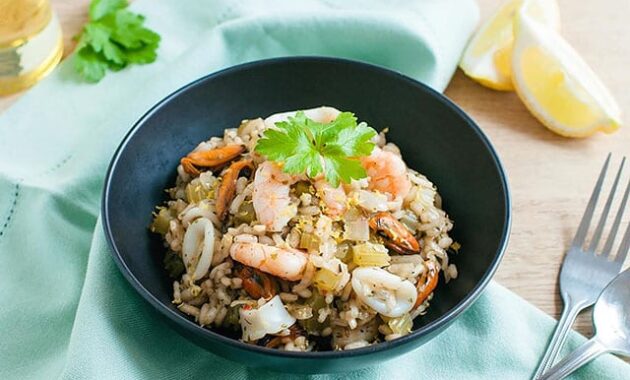Imagine a creamy, flavorful dish that transports you straight to the sun-kissed shores of Italy. That’s exactly what you get with this exquisite Seafood Risotto recipe. This isn’t just another rice dish; it’s an experience. Combining the comforting texture of perfectly cooked risotto with the briny freshness of seafood, this dish is perfect for a special occasion or a cozy weeknight dinner. We’ll guide you through each step, ensuring your Seafood Risotto is a masterpiece. Whether you’re a seasoned chef or a kitchen novice, you’ll find this recipe easy to follow and incredibly rewarding. Get ready to indulge in the rich, savory flavors of this classic Italian creation!
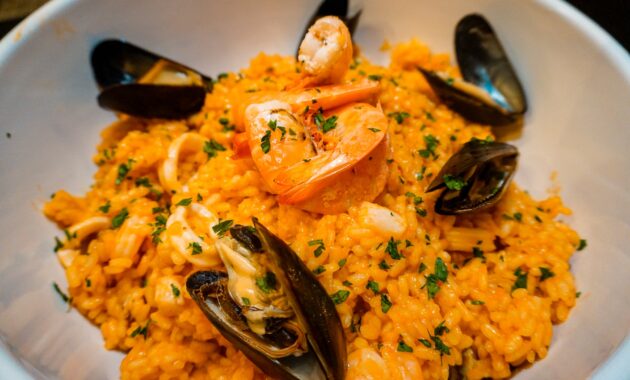

Recipe Overview
Before we dive into the details, here’s a quick overview of what you can expect:
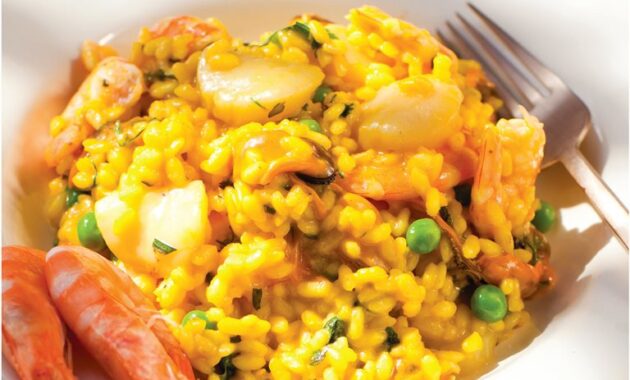
| Category | Value |
|---|---|
| Preparation Time | 30 minutes |
| Cooking Time | 45 minutes |
| Servings | 4 servings |
| Difficulty | Medium |
Nutrition per Serving (Estimated)
Here’s an approximate breakdown of the nutritional value per serving of this delightful Seafood Risotto:

| Nutrient | Amount (Approximate) |
|---|---|
| Calories | 550-650 kcal |
| Protein | 35-45g |
| Fat | 20-30g |
| Carbohydrates | 60-70g |
Ingredients
Gather these fresh ingredients to create your perfect Seafood Risotto:
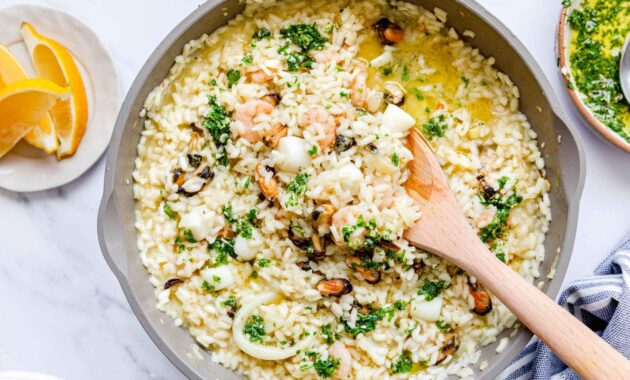
| Ingredient | Quantity | Notes |
|---|---|---|
| Arborio Rice | 1 ½ cups | Essential for risotto’s creamy texture |
| Seafood Mix (Shrimp, Scallops, Mussels, Calamari) | 1 lb | Fresh or frozen (thawed) |
| Fish Stock | 6 cups | Low sodium preferred |
| Dry White Wine | ½ cup | Pinot Grigio or Sauvignon Blanc work well |
| Onion | 1 medium | Finely chopped |
| Garlic | 2 cloves | Minced |
| Olive Oil | 2 tablespoons | Extra virgin |
| Butter | 2 tablespoons | Unsalted |
| Parmesan Cheese | ½ cup | Grated, plus more for serving |
| Fresh Parsley | ¼ cup | Chopped, for garnish |
| Lemon | 1 | For zest and juice |
| Salt and Pepper | To taste | Freshly ground |
Cooking Instructions
Follow these steps carefully to create the perfect Seafood Risotto:

- Prepare the Seafood: If using frozen seafood, ensure it’s completely thawed. Pat the seafood dry with paper towels. This will help it sear properly. Season the seafood with salt, pepper, and a squeeze of lemon juice.
- Sauté the Aromatics: In a large, heavy-bottomed pot or Dutch oven, heat the olive oil over medium heat. Add the chopped onion and cook until softened and translucent, about 5 minutes. Add the minced garlic and cook for another minute until fragrant, being careful not to burn it. This creates a flavorful base for the Seafood Risotto.
- Toast the Rice: Add the Arborio rice to the pot and toast it for 2-3 minutes, stirring constantly. The rice should become slightly translucent around the edges. This step is crucial for developing the risotto’s characteristic creamy texture. Toasting the rice helps to prevent it from becoming mushy during cooking.
- Deglaze with Wine: Pour in the dry white wine and stir until it is completely absorbed by the rice. This usually takes about 2-3 minutes. The wine adds acidity and complexity to the dish.
- Add the Stock Gradually: Begin adding the warm fish stock, one ladleful at a time (about 1 cup). Stir constantly until the liquid is almost completely absorbed before adding the next ladleful. Continue this process for about 20-25 minutes, or until the rice is creamy and al dente – tender but still firm to the bite. This is the key to achieving the perfect risotto texture. The constant stirring releases the starch from the rice, creating the creamy sauce.
- Cook the Seafood: While the risotto is cooking, in a separate pan, heat a tablespoon of olive oil over medium-high heat. Add the seasoned seafood and cook until it is cooked through and slightly browned. This usually takes about 3-5 minutes, depending on the size and type of seafood. Be careful not to overcook the seafood, as it will become tough.
- Combine and Finish: Once the rice is cooked to al dente, stir in the cooked seafood, butter, Parmesan cheese, and lemon zest. Season with salt and pepper to taste. The butter and Parmesan add richness and creaminess to the Seafood Risotto.
- Serve Immediately: Garnish with fresh parsley and a sprinkle of extra Parmesan cheese. Serve the Seafood Risotto immediately, as it will continue to absorb liquid and become less creamy over time.
Serving Suggestions
Here are a few ideas to elevate your Seafood Risotto experience:

- Side Salad: Serve with a simple green salad dressed with a light vinaigrette to balance the richness of the risotto.
- Crusty Bread: Offer crusty bread for dipping into the creamy sauce.
- White Wine Pairing: Pair with a crisp white wine, such as Pinot Grigio or Sauvignon Blanc, to complement the seafood flavors.
- Lemon Wedges: Serve with extra lemon wedges for those who like a brighter flavor.
Tips and Notes for the Perfect Seafood Risotto
Creating a truly exceptional Seafood Risotto involves attention to detail and a few key techniques. Here are some tips to ensure your dish is a culinary triumph:

Use High-Quality Ingredients: The quality of your ingredients will significantly impact the final flavor of the risotto. Opt for fresh seafood and high-quality Arborio rice. Freshly grated Parmesan cheese also makes a big difference.
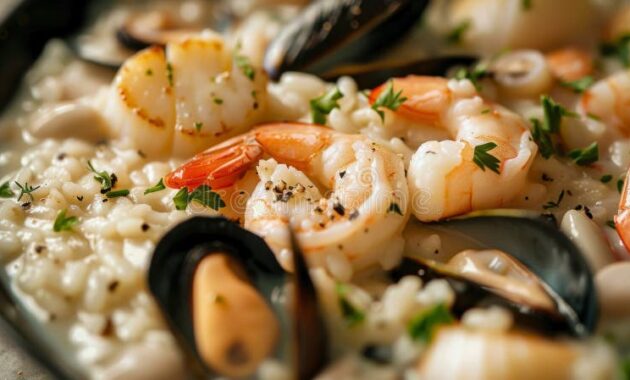
Warm the Stock: Keeping the fish stock warm ensures that the cooking process remains consistent and helps the rice absorb the liquid evenly. This prevents the risotto from becoming starchy or gummy.

Stirring is Key: Constant stirring is essential for releasing the starch from the Arborio rice, which creates the creamy texture that is characteristic of a well-made risotto. Don’t rush this step; it’s the heart of the recipe.
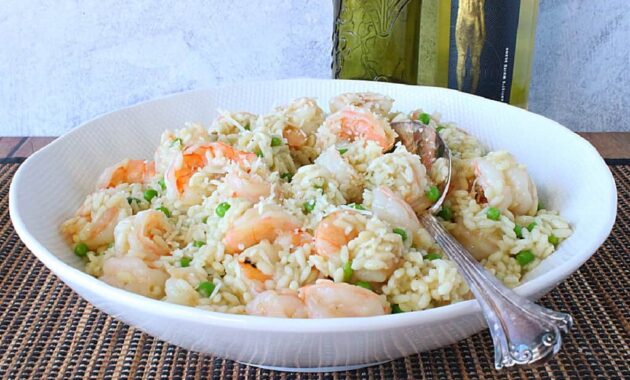
Don’t Overcook the Seafood: Overcooked seafood can become tough and rubbery. Cook the seafood separately and add it to the risotto at the very end to ensure it remains tender and flavorful. A common mistake is to add seafood that needs different cooking times at the same time, resulting in some pieces being overcooked while others are undercooked.
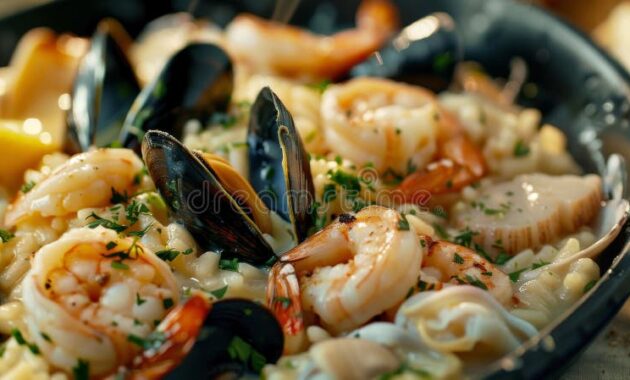
Adjust the Consistency: The ideal risotto consistency is creamy and slightly loose. If the risotto seems too thick, add a little more warm stock until it reaches the desired consistency. If it’s too thin, continue stirring over low heat to allow the rice to absorb more liquid. Remember, the rice will continue to absorb liquid even after cooking, so serve immediately.

Experiment with Seafood: Feel free to experiment with different types of seafood based on your preferences and availability. Lobster, mussels, clams, and squid are all excellent additions to Seafood Risotto. Consider adding some crab meat for a touch of sweetness.
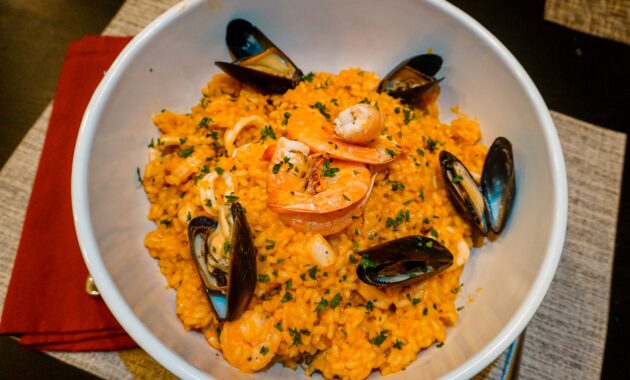
Add Vegetables: For added flavor and texture, consider incorporating some vegetables into your Seafood Risotto. Asparagus, peas, or zucchini are all great options. Add the vegetables towards the end of the cooking process to ensure they remain crisp-tender.
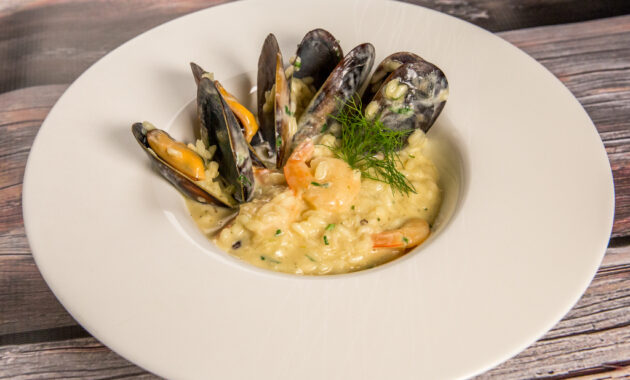
Lemon Zest and Juice: A touch of lemon zest and juice brightens the flavors of the Seafood Risotto and complements the seafood beautifully. Add the lemon zest towards the end of the cooking process to preserve its aroma.
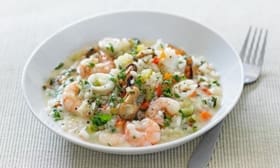
Butter and Parmesan: The final addition of butter and Parmesan cheese adds richness and creaminess to the risotto. Use unsalted butter and freshly grated Parmesan for the best results.
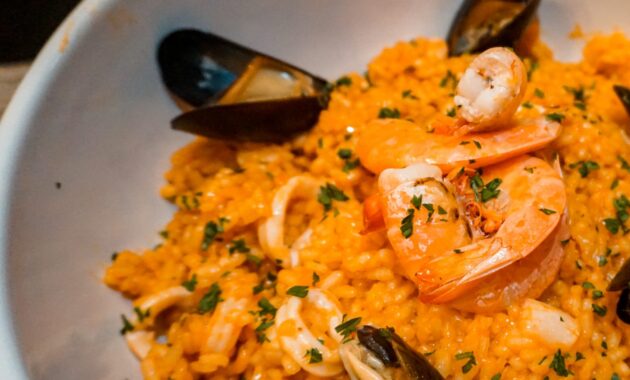
Seasoning: Taste and adjust the seasoning as needed throughout the cooking process. Salt and pepper are essential, but feel free to experiment with other herbs and spices, such as saffron or red pepper flakes.
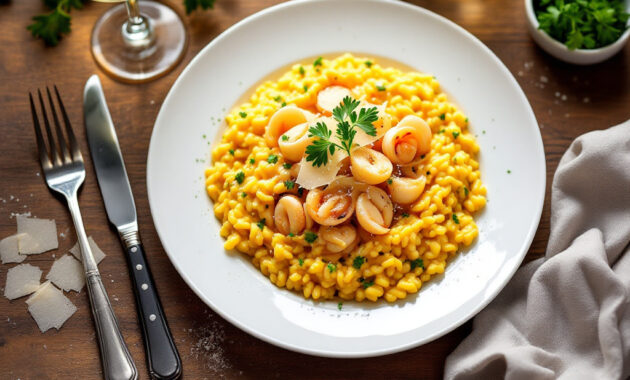
Fresh Herbs: Garnish the Seafood Risotto with fresh herbs, such as parsley, chives, or basil, to add a touch of freshness and visual appeal. This is especially great for complementing the overall dish, giving a refreshing fragrance to the aroma.
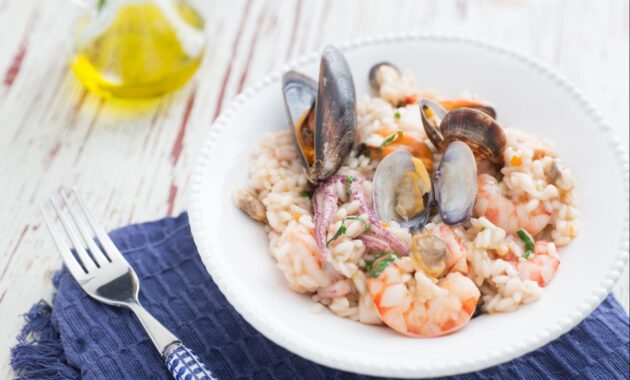
Serving Temperature: Serve the Seafood Risotto immediately while it is hot and creamy. Risotto tends to lose its creamy texture as it cools, so it is best enjoyed fresh.
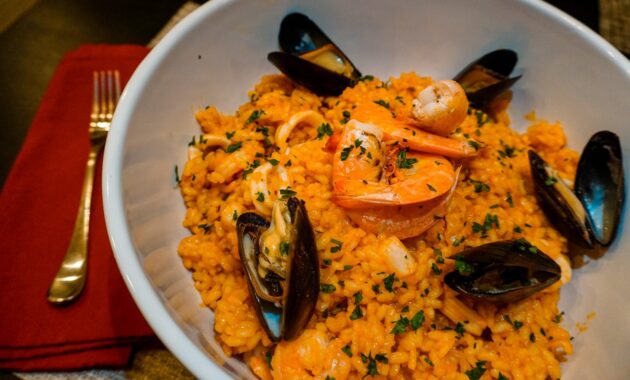
Leftovers: While Seafood Risotto is best enjoyed fresh, leftovers can be stored in the refrigerator for up to 24 hours. Reheat gently on the stovetop with a little extra stock to restore the creamy texture. However, keep in mind that the seafood may become slightly tougher upon reheating.
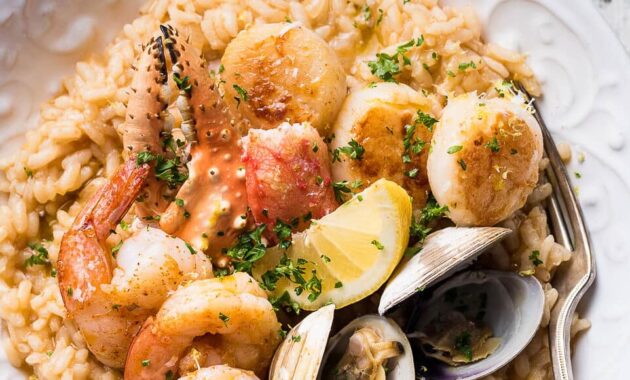
This Seafood Risotto recipe is a testament to the beauty of simple ingredients transformed into an elegant and flavorful dish. With a little patience and attention to detail, you can create a restaurant-quality risotto in your own home. So, gather your ingredients, put on some Italian music, and get ready to embark on a culinary adventure!
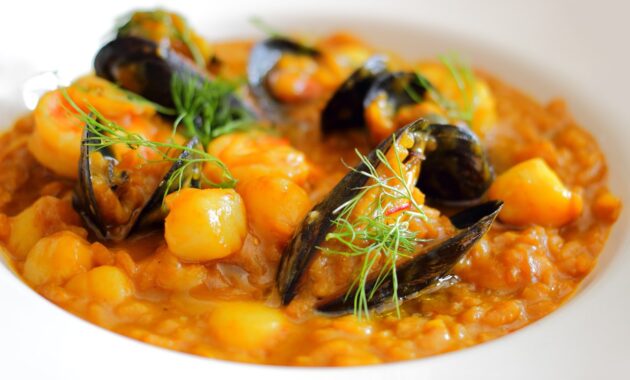
The key to making great Seafood Risotto is quality fresh ingredients and careful attention at each step. Don’t rush it! Every drop of care and patience will translate to that wonderful savory flavor. Enjoy this delicious Seafood Risotto!
